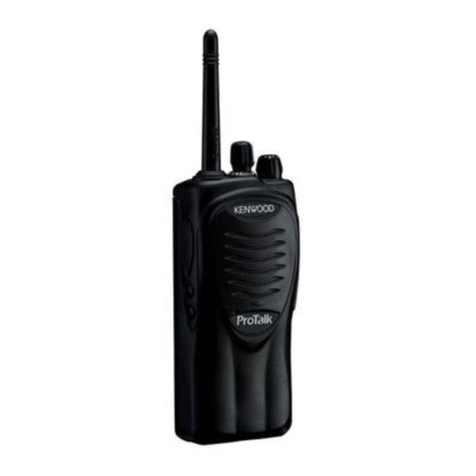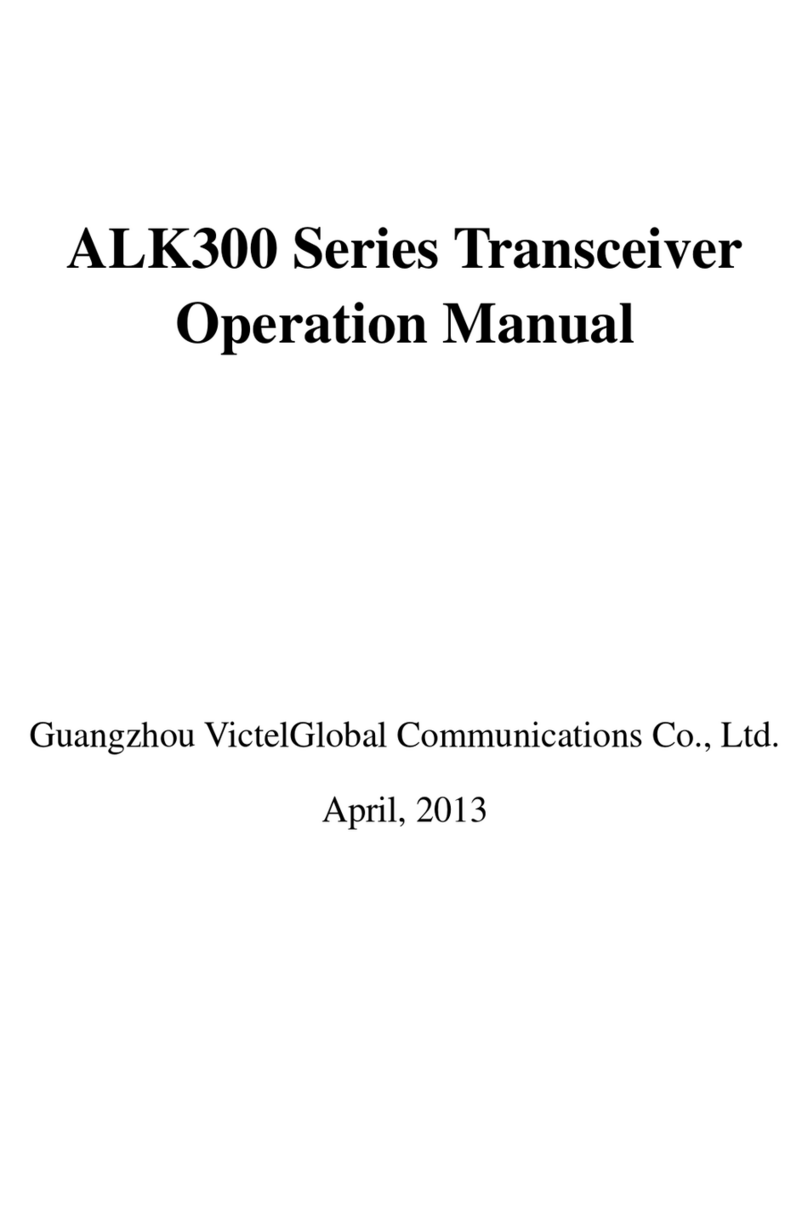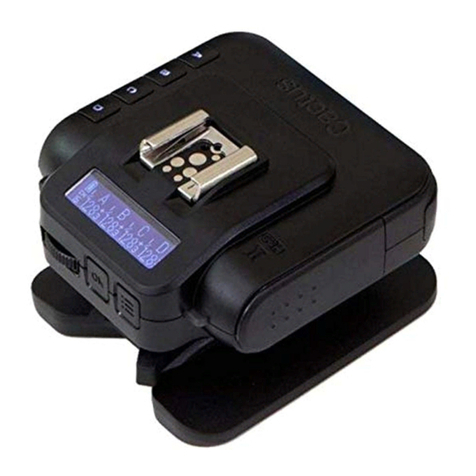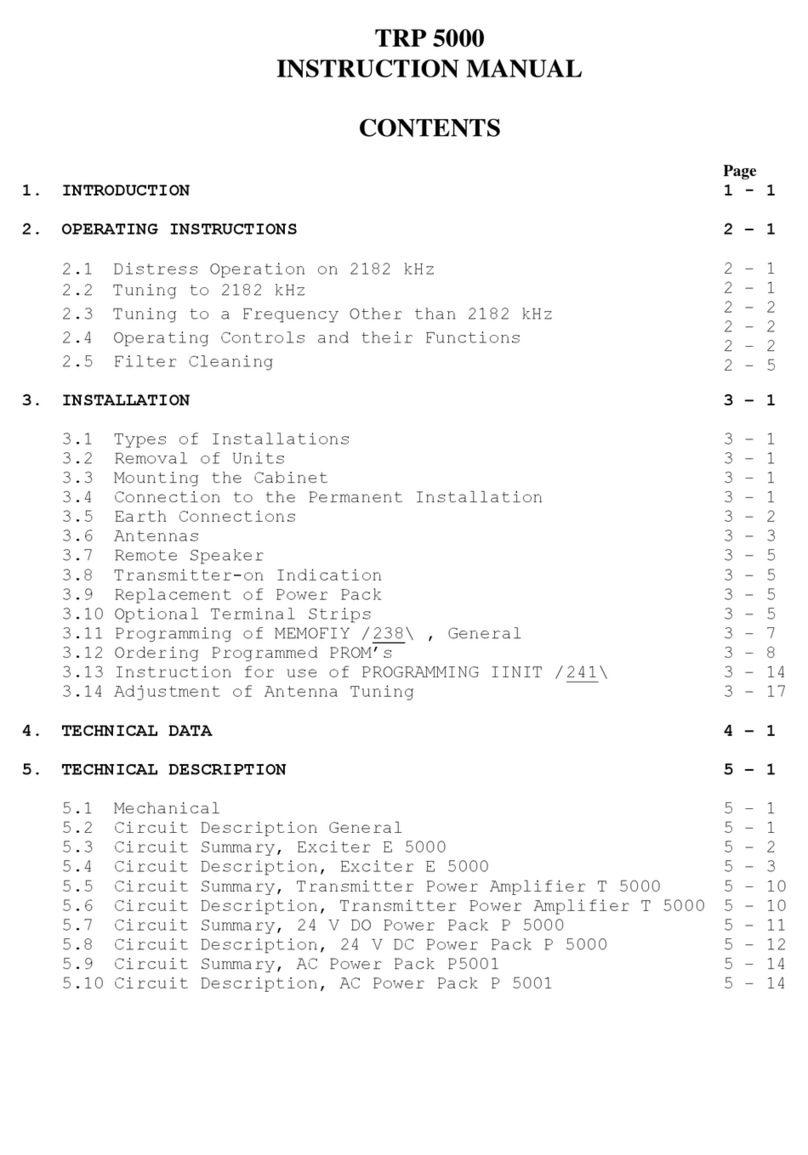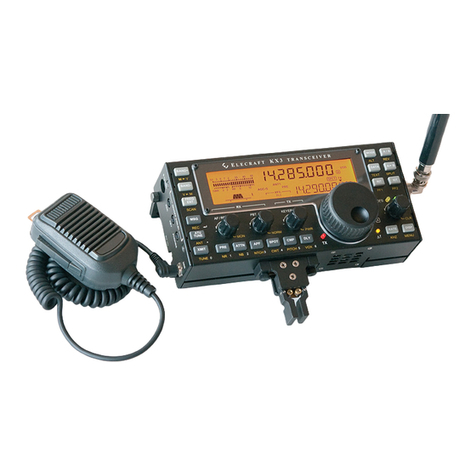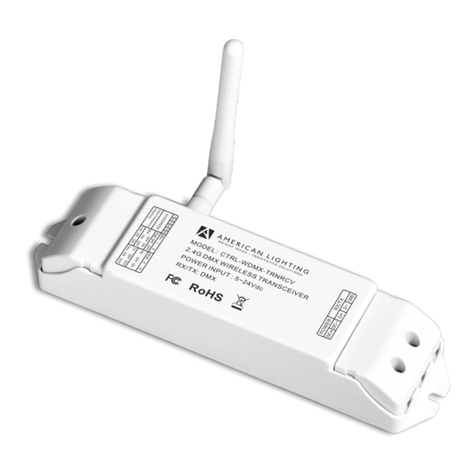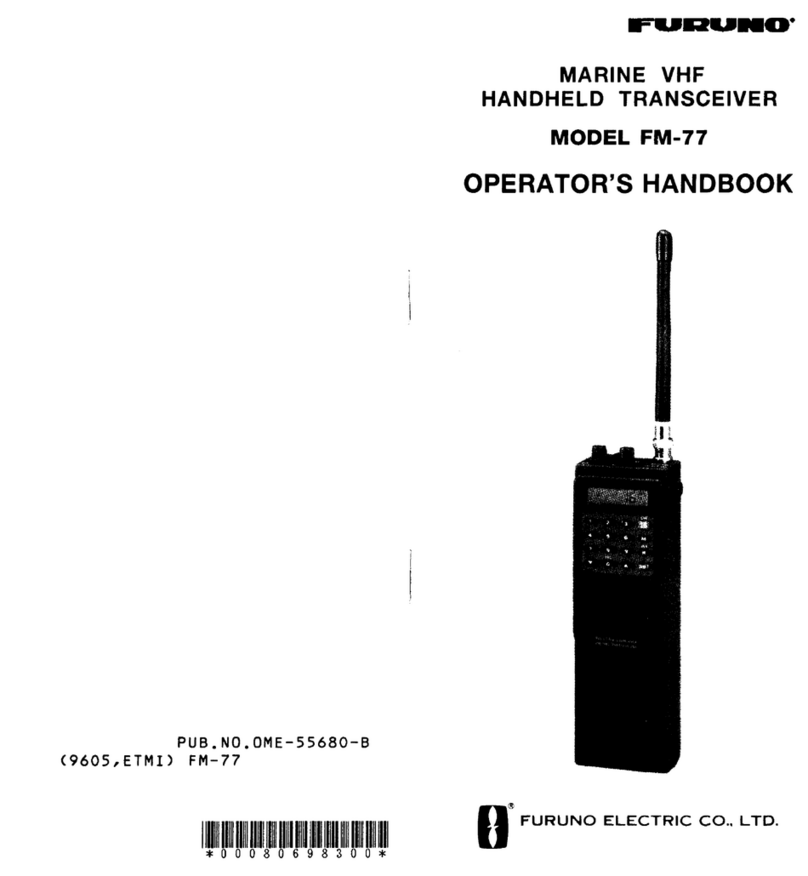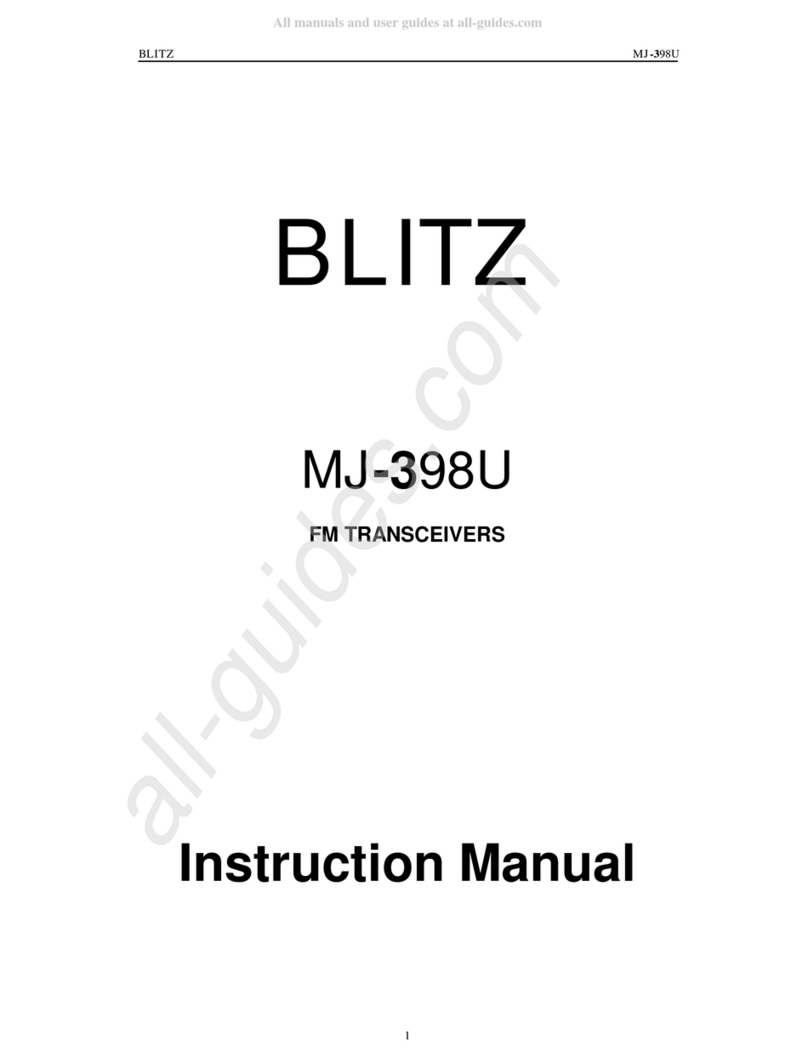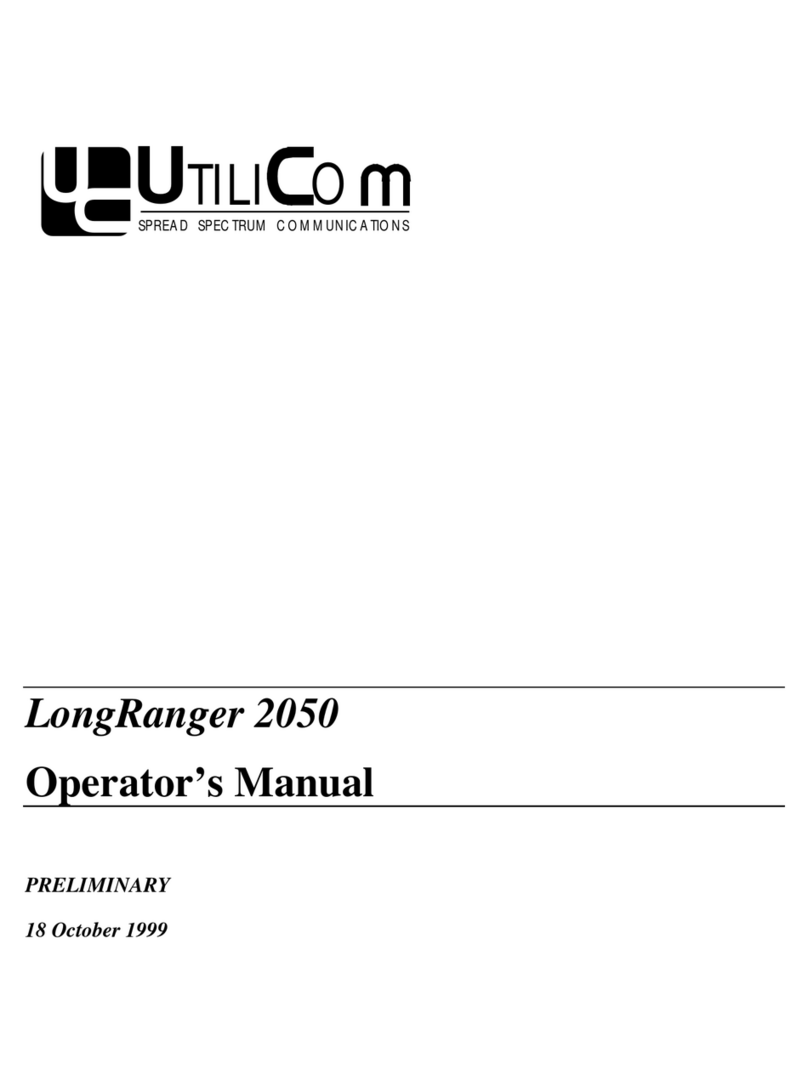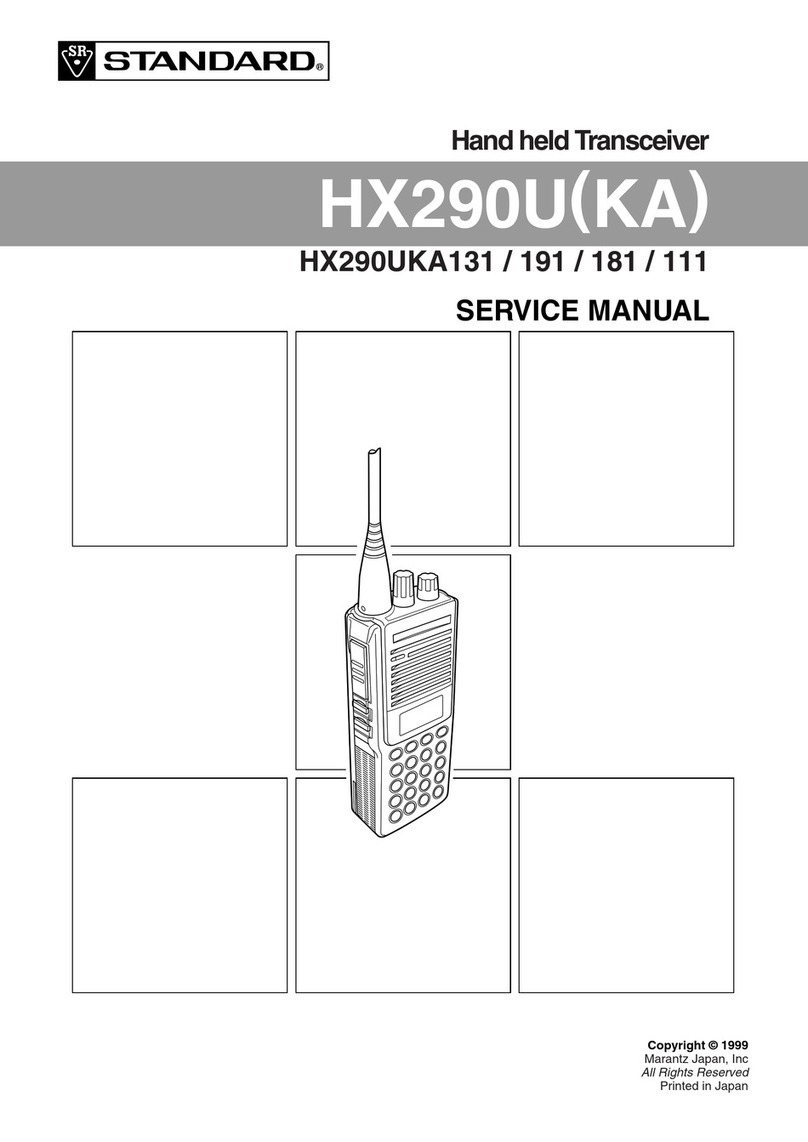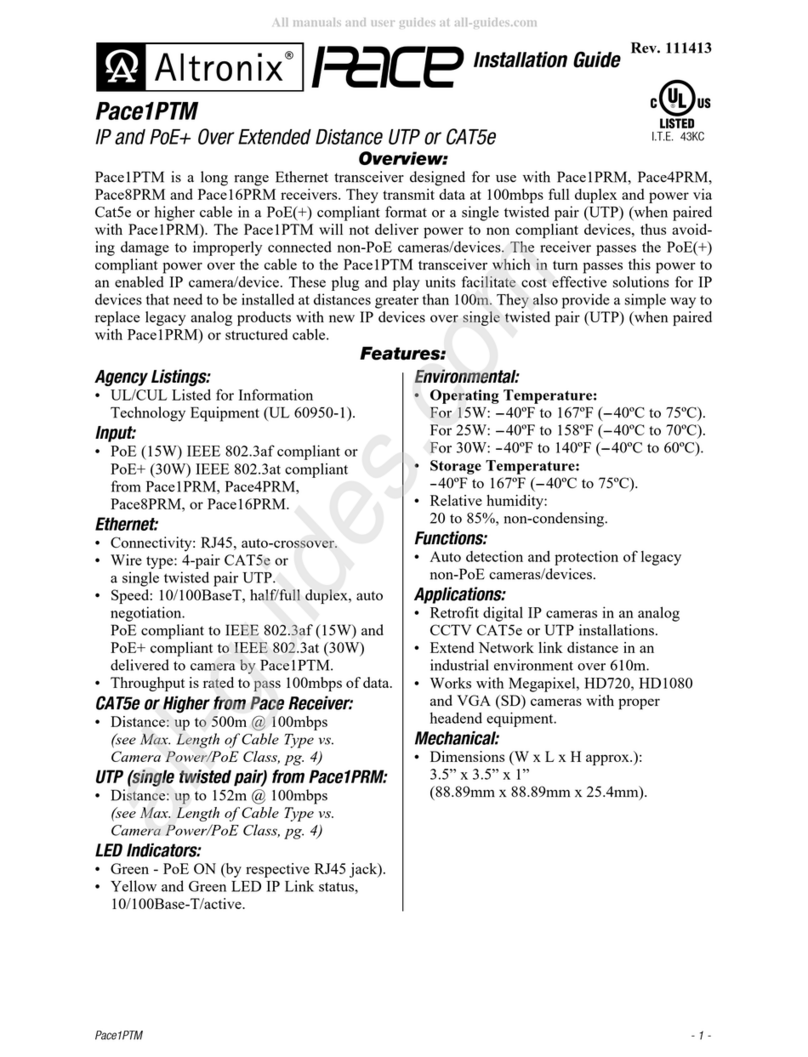
TR 144 H +40
Type TR 144 H +40
VHF Frequency range 144...146 MHz
IF Frequency range 28...30 MHz
IF Input power 1... 0 mW, adjustable /
switchable to range 60 ... 1000 µW
LO accuracy @ 18 °C typ. +/- 2 ppm, max. +/- 3 ppm
(without 10 MHz reference frequency)
LO frequency stability (0 ... +40 °C) typ. +/- 2 ppm, max. +/- 3 ppm
(without 10 MHz reference frequency)
PTT control Contact closure to ground
Output power 2 W
IM3 - 32 dBc @ 20 W PEP
Supply voltage 13.8 V DC (12...14 V)
Current consumption typ. 6 A (TX)
Noise figure @ 18 °C typ. 1.2 dB
External reference input 10 MHz / 2 ... 10 mW
RX Gain typ. 2 dB
IP3 out typ. +40 dBm, min. +37 dBm
Blocking min. -106 dBc @ 3 kHz BW
IM-Dynamic min. 102. dB SFDR @ 3 kHz BW
Image rejection typ. 90 dB
Dimensions (mm) 270 x 260 x 80
Case Aluminium
IF connectors BNC-female / 0 ohms
There are two separate IF connectors.
They can be switched to one common
IF connector
RF connectors N-female / 0 ohms
DC supply and control connector SUB-D 9-pole
Features
- Aluminium case with a big heat sink
- Internally wired with silver plated Teflon
coaxial cable
- Antenna relay with 70 dB isolation
- Converter with excellent large-signal
performance
- Big case for additional filters and other
components
- Built-in directional coupler for calibrated
power output control
- Power amplifier with built-in VSWR
protection
- -pole low-pass filter for harmonic
rejection
- Spurious and harmonic rejection better
than 60 dBc
- Low noise butler oscillator with
adjustable frequency;
40 °C precision crystal heater
- Phase noise of the oscillator better
-1 6 dBc/Hz @ 10 kHz
- Built-in sequence control
- Cable for control and DC supply
included
- Handbook included
Hig Performance 2 m Transverter
Several decades of engineering and production of Transverters result in t is new designed ig
performance Transverter TR 144 H +40. Its outstanding tec nical data make it usable for many
applications. T e transverter was originally designed for VHF amateur radio applications, for example
ig performance contest stations. T e receive pat of t e transverter provides very good large-signal
performance. T e new design of our transverter for 144 MHz features better performance and many new
functions.
Now, an external 10 MHz reference
frequency can be connected to ac ieve
ig est frequency accuracy. T is is
necessary for EME and WSJT. T e
frequency of 10 MHz can be supplied by a
ig ly stable OCXO, a reference oscillator
of a frequency counter, a rubidium
frequency standard or a GPS controlled
frequency source.
T e new design includes t e “old” options 02 (TX IF input power 60...1000 µW / 0...-12 dBm) and 06
(common IF-connector for RX/TX). So t e Transverter is compatible to most of t e used HF transceivers
wit transverter output. T e TX IF input ranges and t e IF connector configuration can be done wit t e
internal switc es of t e transverter. T e “old” option 04 (drive gain control on t e front panel) is
standard now.
